Kang Yatse- II : The journey begins
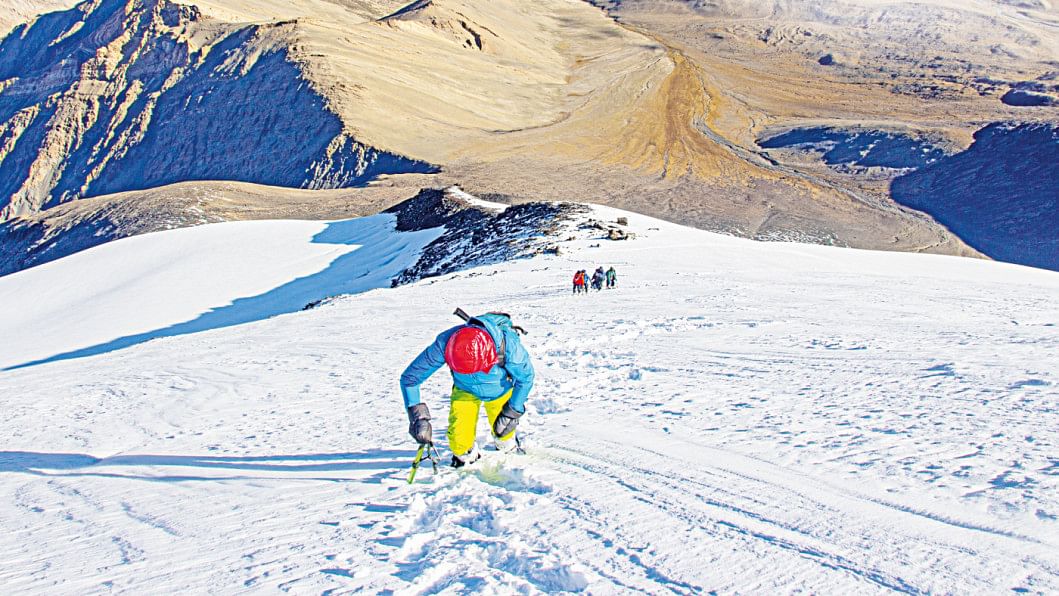
It was a cold night in mid-September. The thick darkness was so depressing that I switched on the red light of the headlamp. The gentle dim light illuminated the tiny space inside our yellow tent making the gloomy atmosphere somewhat comforting.
At least the frozen darkness was not suffocating anymore.
The day before yesterday (September 10, 2022), Imran Khan Ozil and I, the two-member GoZayaan Expedition Ladakh team, arrived at the base camp of the 6254-meter-high Kang Yatse- II peak.
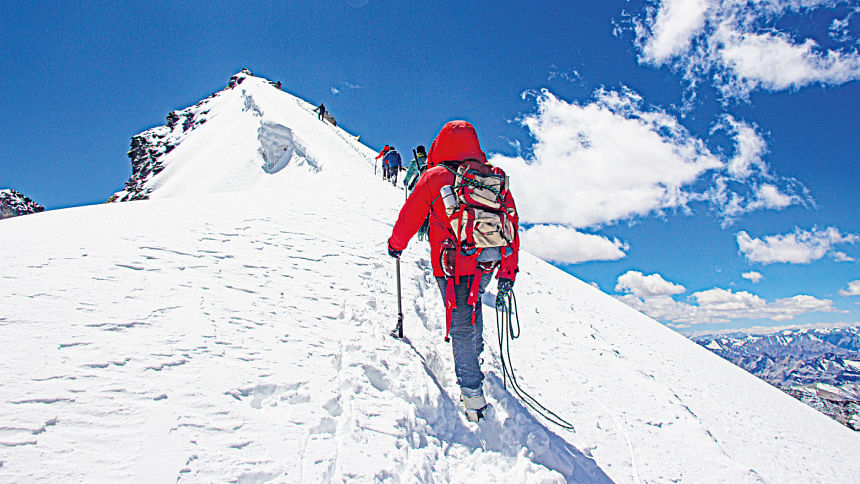
Our goal was to climb four high-altitude peaks -- Kang Yatse II (6254m), Dzo Zongo East (6214m), Regioni Mallai Ri- I (6120m) and Conga Ri (5755m) -- in just ten days.
We were in the Markha Valley of the Western Himalayas located in Hemis national park of Ladakh, a mostly high-altitude frozen desert nestled between the Himalayas and Karakoram. We chose this part of the Himalayas for our expedition, not only for its high altitude giants but also for its spectacular landscape. The deep-rooted Tibetan culture of the region was a bonus.
We departed Dhaka on September 4 and arrived in Leh, the capital of Ladakh, the following day.
After obtaining the required permits and logistics, we started the trek on September 8 and two days later reached the base camp, located at an altitude of about 5100 meters above sea level.
Although we wanted to push the summit last night, we decided to wait a day due to bad weather. A Spanish team of two attempted the climb yesterday amid gusty winds and heavy snowfall. This morning, they returned devastated.
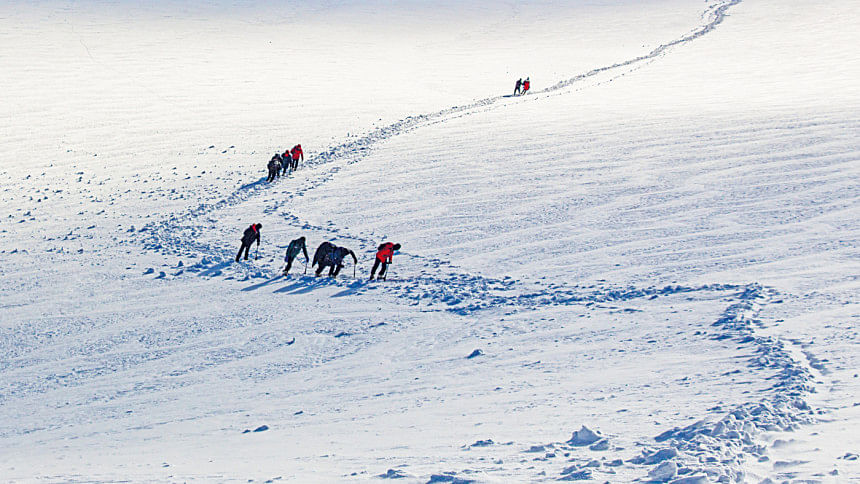
Earlier, in the evening, by seven, we slipped into the warmth of our sleeping bags after dinner, waiting eagerly sleep. A few hours of sleep was needed before we started our summit push. The plan was to wake up by eleven, get dressed, and leave the tent before the clock hit twelve. The alarm was set accordingly. But my biological clock wasn't.
Right next to me, Ozil, my partner in crime, was lying cocooned in his sleeping bag. There was no way to know whether he was asleep or not. The eerie silence, the anticipation, the excitement, the freezing cold, the fear of uncertainty…. these all kept me awake. All my attempts to calm down my hyperactive brain failed.
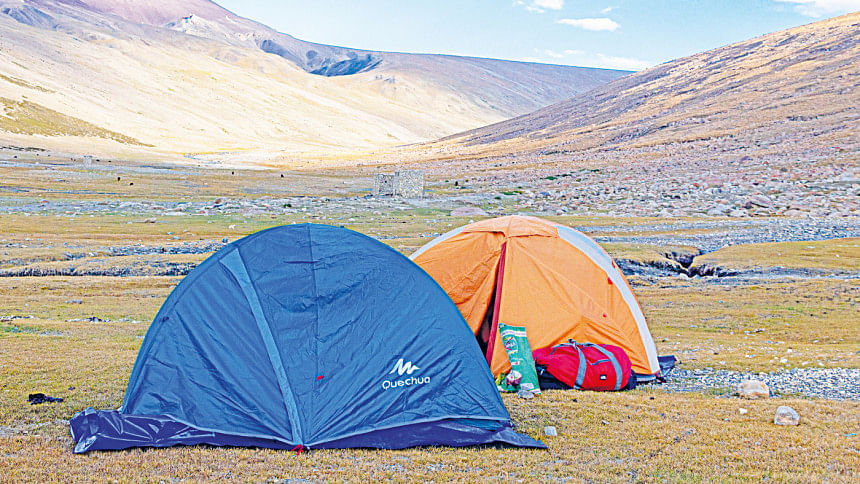
The moment finally arrived. I turned off the alarm before it could go off. Ozil also sat up at the same time. First, I lit the gas stove and put water on it for coffee. While waiting for the water to boil, we covered ourselves with down jackets, waterproof trousers, and balaclavas to face the brutal cold outside.
The black coffee felt good. It was nice to have something hot down your throat in such weather. We were about to set off for nearly twelve to fifteen hours of climbing in such tough conditions. The caffeine would come in handy.
It wasn't midnight yet. Slipping on our climbing boots and shouldering the summit bags, we headed out of the tent. It was time.
Stepping outside, I realised how strangely the human mind works. Though the difference was negligible, the inside of the tent felt much warmer. No matter how tiny, rough or uncomfortable it is, a home or shelter instantly provides a sense of security. Going away from that shelter, temporary or permanent, has the opposite effect. Overcoming that ambivalent state of mind and taking the first step defying all the odds sometimes prove to be the hardest part of any expedition.
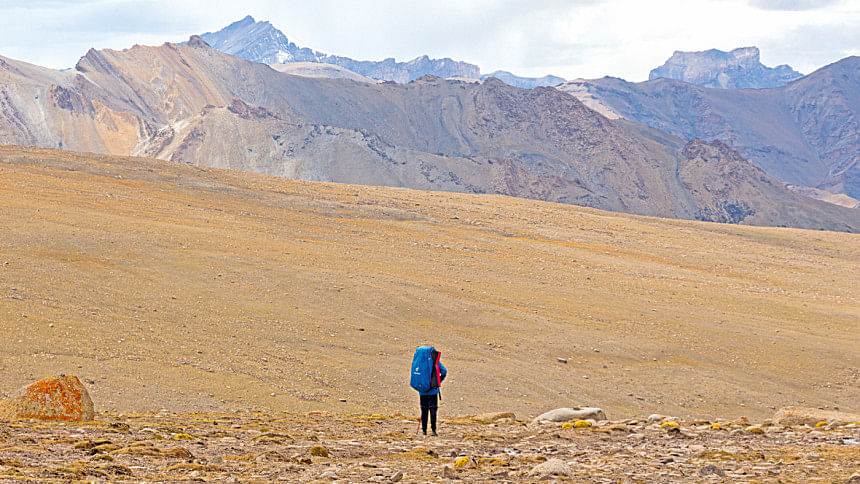
We took that step.
Though it was supposed to be a full moon, the cloudless sky was sparkling with stars. A gentle breeze was blowing. Apart from a flapping sound of a loose rain flyer in a tent of a nearby expedition team, the valley was in a deep sleep. We could only see the shapes of other basecamp tents in the star-lit night.
The weather was perfect for the summit push. But mountains are unpredictable and the weather there can change in no time.
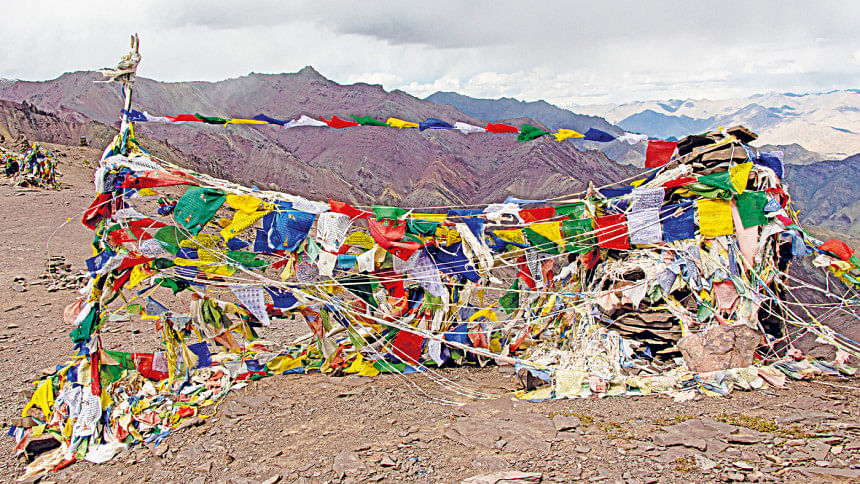
Slowly, we passed the very last tent at the end of the valley and started to climb up through the popular western slope of the mountain. Far above, the shape of a stupa could be seen. That would be our first stop.
In this part of the rugged world, the local people erect stupas by piling stones which work as a guidepost. It is primarily a Tibetan practice, but all parts of the Himalayas now follow this to navigate easily. Within an hour we reached there. Then we saw another stupa above and started climbing in that direction. As we approached the second stupa we came to a ridgeline.
Then an ethereal thing happened.
From the south, a huge, rust-yellow moon peeked out from behind the high mountains. The pale buttery yellow light radiating from the moon reflected upon the snow-white massif of Kang Yatse and lit up the entire valley. Turning off the headlamp, we both sat in awe for a while.
After some time, thanking nature for this spectacular view, we again started climbing.
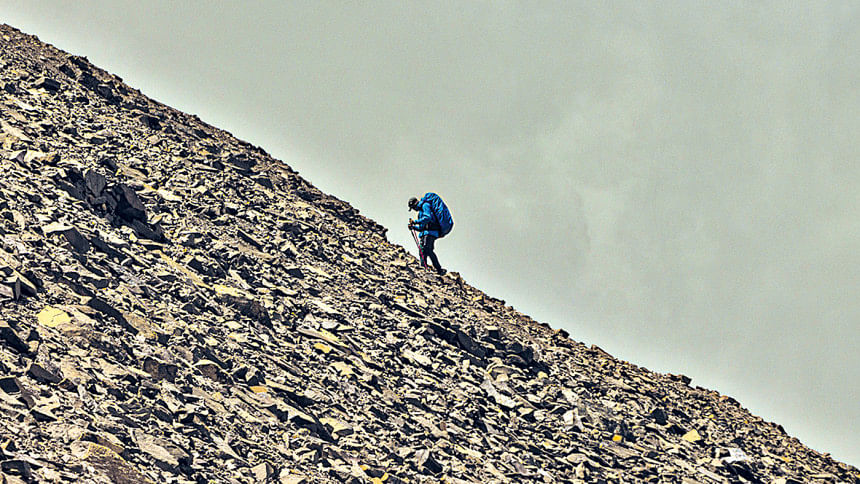
From 5400 meters, we found snow on the trail. After another hour, around 3:00 pm, we reached the crampon point. Now we had to move through a steep snow field. We set the crampons with the boots tightly. I tied gaiters so that the snow could not get inside the boots.
The journey resumed again after a short coffee break.
After a few steps, we were surprised to find the snow was loose, fluffy and deep. We trudged the trail through this slushy, knee-deep snow for an hour. After climbing for another 400 meters, we encountered another amazing cosmic event.
The sight of sunrise from a height of almost six thousand meters is always dramatic. It doesn't matter how many times you have experienced this, it's bound to move you, each time. The riot of colours on the towering peaks and sky, the illumination of the vast valleys before the first rays hit the earth, are bound to astonish you. The enormity of the mountains in that sacred moment should make us all feel what we are- a tiny part of this nature.
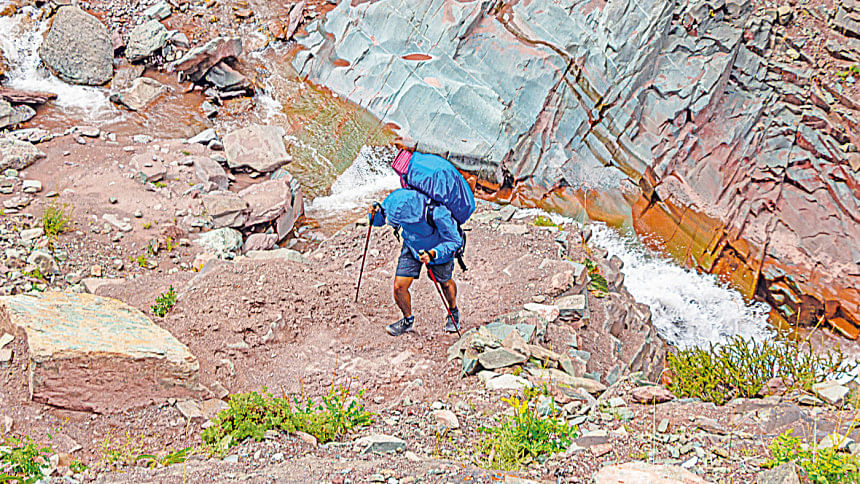
While all these were happening, we noticed a headlamp was approaching fast towards us. To our surprise, the path which took us three long hours, the owner of the lamp climbed in just half an hour. It was Dorje Ji, the lead Sherpa guide of an Indian team. Dorje profusely thanked us for breaking the trail so far. He also praised our courage to attempt the mountain in alpine style.
While waiting for the Indian team, we shared snacks among ourselves. After a while, the team emerged below tied together in a rope for safety. After a little discussion, considering his strength and expertise, we decided to follow the rest of the trail behind Dorje Ji.
Meanwhile, the Indian team reached the shoulder. After a little rest, the team started climbing the ridgeline's last part. And we followed. After another hour of trekking, we reached the summit of Kang Yatse-II at 12: 08 pm. We all celebrated the moment together.
But the journey was half-done and we had hours of descent ahead.
The descent was uneventful but mesmerizing. Perhaps it was the thin air, but everything seemed beautiful. To save some time I glissaded down to the crampon point. It was rather unconventional, may be a little risky, but very effective. The three hours climb just took 15 minutes!
At around 3:00 pm we reached our tent. This time falling asleep wasn't the problem. After a good meal, sleep came crashing on us. Our bodies needed rest as the challenge wasn't over. We were all set to scale two more six thousanders in the coming days.
To be continued …

 For all latest news, follow The Daily Star's Google News channel.
For all latest news, follow The Daily Star's Google News channel. 



Comments